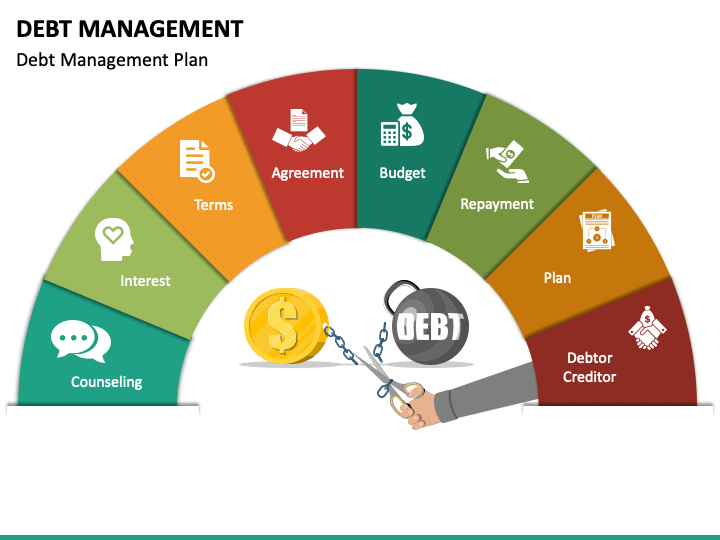Everything You Required to Find Out About Developing a Tailored Financial Debt Management Strategy
In the world of individual financing, creating a tailored financial obligation management plan is commonly the foundation of accomplishing financial stability and comfort. By diligently reviewing your existing monetary responsibilities, setting attainable financial objectives, and crafting a useful spending plan, you pave the way for efficient financial obligation repayment strategies. However, the trip to economic liberty is not only regarding initial preparation; it additionally calls for ongoing tracking and modifications to guarantee continued progression. As you navigate the intricacies of producing an individualized debt management strategy, understanding the complexities of each step is crucial to your financial success.
Assessing Your Present Financial Obligation Situation
One should initially carry out a comprehensive examination of their existing debt responsibilities prior to formulating an effective financial debt monitoring strategy. Produce a thorough checklist of each debt, consisting of the complete amount owed, interest prices, minimum month-to-month payments, and due days.
After assembling this info, compute your total debt-to-income proportion by splitting your monthly financial obligation settlements by your regular monthly earnings. This proportion is a crucial indicator of your capability to take care of current financial obligation levels successfully. Furthermore, evaluate your credit score record to identify any type of errors or disparities that might be affecting your credit rating. Comprehending these elements of your financial situation will certainly assist you in developing an individualized financial obligation monitoring plan customized to your particular requirements and objectives.
Setup Financial Goals and Targets

When establishing monetary objectives, it is very important to be details, measurable, possible, pertinent, and time-bound (SMART) For example, you could establish an objective to repay a particular amount of financial debt within a certain period, such as reducing your charge card balance by $5,000 in the next year - More Discussion Posted Here. By setting clear targets such as this, you can track your progress and remain inspired to attain your financial debt monitoring purposes
Furthermore, consider prioritizing your financial debts based on elements such as rates of interest, superior balances, and settlement terms. By concentrating on high-interest financial debts first, you can conserve cash in the future and accelerate your journey towards monetary liberty. Bear in mind, each person's monetary circumstance is unique, so customize your targets and goals to fit your specific requirements and conditions.
Producing a Realistic Budget Plan
Crafting a distinct budget is a basic step in effective debt management and financial preparation. A realistic spending plan offers as a roadmap for your monetary health, helping you track your earnings, expenditures, and debt payments. To develop a functional spending plan, begin by listing all your resources of earnings.
On a regular basis evaluation and adjust your budget plan as required to stay on track with your economic goals and financial debt repayment strategy. By sticking to a reasonable budget plan, you can effectively manage your financial debt and job in the direction of an extra redirected here secure monetary future.
Discovering Financial Debt Payment Approaches
After developing a realistic budget, the following critical action in effective financial obligation monitoring is to published here explore various debt repayment techniques. One typical technique is the snowball technique, where you concentrate on settling the tiniest financial obligations initially while making minimum settlements on larger debts. This technique can assist construct momentum as you see smaller debts being cleared, offering inspiration to deal with larger ones.
One more strategy is the avalanche approach, which entails prioritizing debts with the highest possible rate of interest. By targeting high-interest financial debts initially, you can minimize the general amount you pay in passion gradually. This technique may be much more economical in the future, even though it could take longer to see specific financial debts completely settled.
Debt combination is another alternative where you combine numerous debts right into a solitary financing with a reduced rate of interest. This can streamline your payment process and possibly reduce the complete rate of interest paid. However, it's necessary to thoroughly think about the terms and fees connected with consolidation to guarantee it's the best selection for your monetary scenario.
Tracking and Adjusting Your Strategy

Adjusting your strategy might include reapportioning funds to take on high-interest financial debts first, working out with financial institutions for lower interest rates or much better settlement terms, or exploring extra earnings sources to accelerate debt payment. As your monetary circumstance progresses, your financial obligation administration plan must adapt appropriately to stay effective. By staying positive and versatile in surveillance and readjusting your strategy, you can enhance your initiatives towards paying off your financial obligations effectively and achieving your monetary goals.
Conclusion
To conclude, creating a customized debt monitoring strategy includes assessing existing debt, establishing financial objectives, developing a realistic spending plan, checking out repayment strategies, and monitoring and readjusting the strategy as needed. By following these steps, individuals can take control of their economic circumstance and work in the direction of ending up being debt-free. It is very important to stay self-displined and dedicated to the strategy in order to accomplish long-term economic stability.
One have to initially carry out a complete examination of their existing debt obligations before creating an efficient financial obligation administration plan.After establishing a realistic budget plan, the following crucial step in efficient debt administration is to check out various financial obligation settlement techniques - More Discussion Posted Here.To properly manage your financial debt, continuous tracking and change of your financial obligation management strategy are essential elements for lasting monetary security.Adjusting your plan might entail reapportioning funds to tackle high-interest financial obligations initially, negotiating with lenders for reduced rate of interest prices or better repayment terms, or checking out extra revenue sources to speed up financial obligation payment.In conclusion, creating an individualized financial debt monitoring strategy involves assessing current financial obligation, setting financial goals, producing a practical spending plan, discovering settlement techniques, and surveillance and readjusting the strategy as required